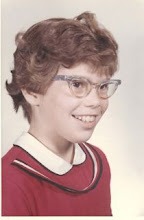Using the Book Wonder As A Read Aloud In The Classroom
by Joan Jurgens
One of the most memorable experiences of my life was being a
volunteer in a hospital for chronically ill children. I volunteered with awe
and reverence watching young lives struggle with their day to day routines. Few
exhibited sadness and I was grateful for this enriching experience.
As a teacher of young children, I wish to share my
experiences that are meaningful and can help shape young minds in a positive
direction. Along with explaining my past volunteering experiences, I came
across an extraordinary book that could send a strong message to readers about
acceptance and more over compassion for those individuals who are different from
the general population.
This book called Wonder
by Patricia Palacio is a fabulous read aloud that envelops the students’
interest from the first page to the last chapter. While it is a lengthy
realistic fiction novel, the high level conversations and ah ha moments found
by my students were well worth the time invested by this teacher. Although I
could only spend a prescribed amount of time reading to this class Ms.
Palacio’s fine literary prose, the students rose to the occasion having their
own private talks among themselves how this book influenced their lives. And
better yet, many impatient for the finale, bought their own copy of the book so
that they could read ahead and or reread chapters that we had already
completed.
The class grew to know the characters and their attributes
and lively discussions blossomed from their grasping of this new information.
Why were some characters so mean spirited towards Auggie, a twelve year old
born with cranialfacial abnormalities? How could a child be born with this
severe deformity? What could he really look like? Many drew pictures illustrating
how they thought the main character would appear in our world. My students were
appalled at two things about the book. The first being how other students who
Auggie had contact with could treat him in such a vicious and condescending way
and finally why this book didn’t win the Newbery award. Apparently, the ending
was too pat for the review board.
One student in my class was an aficionado of Star Wars
corrected me constantly in my mispronunciation of the Star Wars’ characters as
Auggie had a great love of this fantasy movie. The class evolved at least in my
eyes as a cohesive body of educated young adults, but truly they were only nine years old! Their sophisticated
explanations of the cruel bullying that Auggie experienced in his young life
were remarkable. The comments from my students proved that when students are
educated about the unknown, they become informed pupils who make wise decisions
which would raise their social consciousness.
As a young girl, I loved swimming in our town pool. I could
spend hours with my imagination floating and doing the doggy paddle. I would
only emerge when my fingers were so shriveled from the pool water that it was impossible to
stay afloat another minute. However, on occasion a middle aged couple would
bring their disabled son into the pool. I presumed that he had cerebral palsy
and each parent took turns holding him afloat in the water. I watched with
curious eyes and still to this day I can remember the mother’s loving
expression as her son delighted in the cool chlorine currents of the water.
But, I would never swim near them! Perhaps I would catch what this boy had! I
always maintained a comfortable, at least in my mind, distance from the duo.
In retrospect, I never discussed my deep emotional feelings
about swimming with handicapped people and how foolish I was as a child with my
distorted thinking. I believe this book Wonder
bridges the missing pieces for young readers. Palacio adeptly explains in small
increments easy to understand explanations for Auggie’s disabilities. The
unfolding of Auggie’s first school year in a regular school is told with humor
and shocking honesty as students react to Auggie’s deformed face with pity,
sympathy, and malice.
I felt that my students became a cheering team for Auggie
and the anger that they felt for some students in the book who were down right
cruel towards the protagonist was almost palpable. We would role play the inner
workings of many of the main characters’ minds. This literary dramatization
helped to facilitate wonderful creative dialogue and led to explicit analysis
of scenes in this realistic novel. Each time I would read a chapter from Wonder, I felt as if Auggie hovered
above our reading circle urging on my students’ social conscience. We wished
for Auggie to be part of our classroom and he was!
I strongly believe that each
one of my twenty-two students left my class in June as a positively changed
individual with a deep regard for others who are different than themselves. And
if this is true, I can honestly say, literature can change lives.
Thank you, Joan, for sharing your class' experience with us. It'd be great to hear from other teachers and librarians about book titles that have spurred similar conversation and growth.




This was wonderful. How important for children to learn compassion early.
ReplyDelete